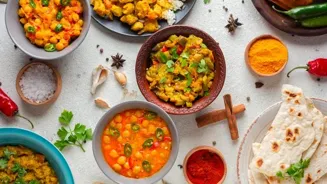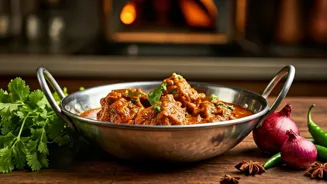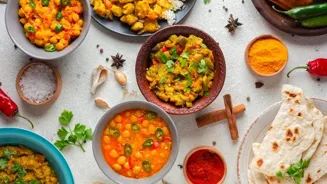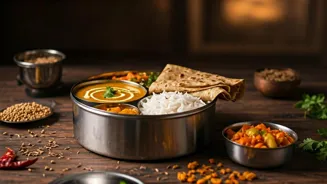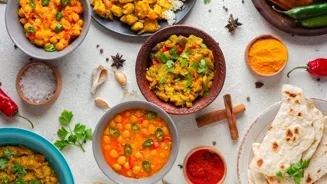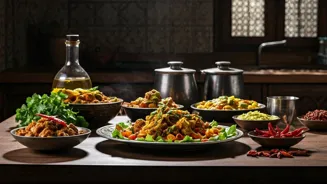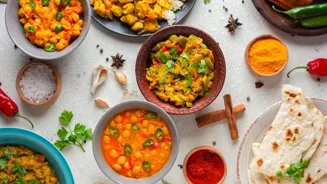Discover the art of slow cooking in Indian cuisine, unlocking flavors and nutrients for a unique dining experience
In today's fast-paced dunia, where everyone is rushing from one task to another, the art
of slow cooking might seem like a relic of the past. However, embracing this traditional method can unlock a world of flavour and nutrition in your Indian meals.
Slow cooking, as the name suggests, involves cooking food at a low temperature for an extended period. This allows the ingredients to meld together, creating a symphony of tastes and textures that are simply unparalleled.
It might take more time but it also helps to retain more nutrients that can get destroyed in the super fast cooking. So, why not put aside your instant noodles for a while and try slow cooking?
Embracing slow cooking enhances Indian dishes' flavors
One of the main benefits of embracing slow cooking in Indian food is the depth of flavour it brings out in the dishes. Think about it – ingredients like spices, vegetables, and lentils have time to release their full potential when cooked slowly.
The heat gently coaxes out the natural sweetness of vegetables, while allowing spices to infuse every bite with their aromatic essence. It is very true. Think of a slow-cooked dal makhani, The smokey flavour, the creaminnes, the way the lentils gives in with every bite.
You cannot just achieve it in a pressure cooker. The long cooking renders the dal creamier, mellower, and deeply flavorful. It is very nice when you think about it. You can even enhance the flavour with the traditional style.
Slow cooking enhances flavor of tough vegetables with spices, a traditional Indian method
Furthermore, slow cooking is a boon for making tough cuts of vegetables more tender and flavourful. Vegetables like colocasia or even unripe bananas can be cooked slowly. This traditional method also gives you the chance to experiment with different spices and see how they react to slow cooking.
Turmeric, cumin, coriander, and garam masala are some of the building blocks of Indian cuisine. Experiment with quantity used and taste the flavour. You will learn to tweak it as per your choice. The slow method of cooking enables to produce complex flavour in the dishes.
In many rural villages, this traditional method is still followed.
Slow cook Indian dishes for enhanced flavor and texture, no kitchen overhaul needed
Incorporating slow cooking techniques into your Indian cooking doesn't require a complete kitchen overhaul. You can start by experimenting with dishes you already know and love, such as sambar or vegetable korma.
Instead of pressure cooking the lentils for your sambar, try letting them simmer on the stovetop for a couple of hours. You'll be surprised at the difference it makes in the texture and flavour. You should also try with slow cooking paneer dishes using a slow cooker.
Another awesome thing about slow cooking is that you do not need to be around it all the time. Once the prep is done, you have free time to explore.
Explore slow-cooked Indian recipe Undhiyu, a Gujarati delicacy
If you're feeling adventurous, you can explore lesser-known slow-cooked Indian recipes like Undhiyu. Traditionally cooked in earthen pots buried underground, this Gujarati delicacy features a medley of vegetables, beans, and spices cooked to perfection over a slow fire.
And with festivals coming up, this is the perfect time to test your chef skills. There are many videos available online which can help you get the recipe and the technique right. Just be sure to take the necessary precautions while lighting a fire.
Also monitor it, so that the vessels are not damaged.
Slow cooking reduces food waste, reuse leftovers creatively in Indian cuisine
Slow cooking is also a great way to reduce food waste. Instead of throwing away leftover vegetables, you can toss them into a slow cooker with some spices and broth to create a flavourful vegetable stock.
You can also use slow cooking to revive stale roti or bread by turning them into a delicious bread pudding or savory upma. You can experiment with spices, use your taste and try different combinations. This would ensure that food does not get wasted and this method helps reuse leftover food.
It is a boon for the environment and also helps manage the cost of food. So, embrace the slow cooking in your Indian cuisine.
AI Generated Content. Glance/InMobi shall have no liability for the content